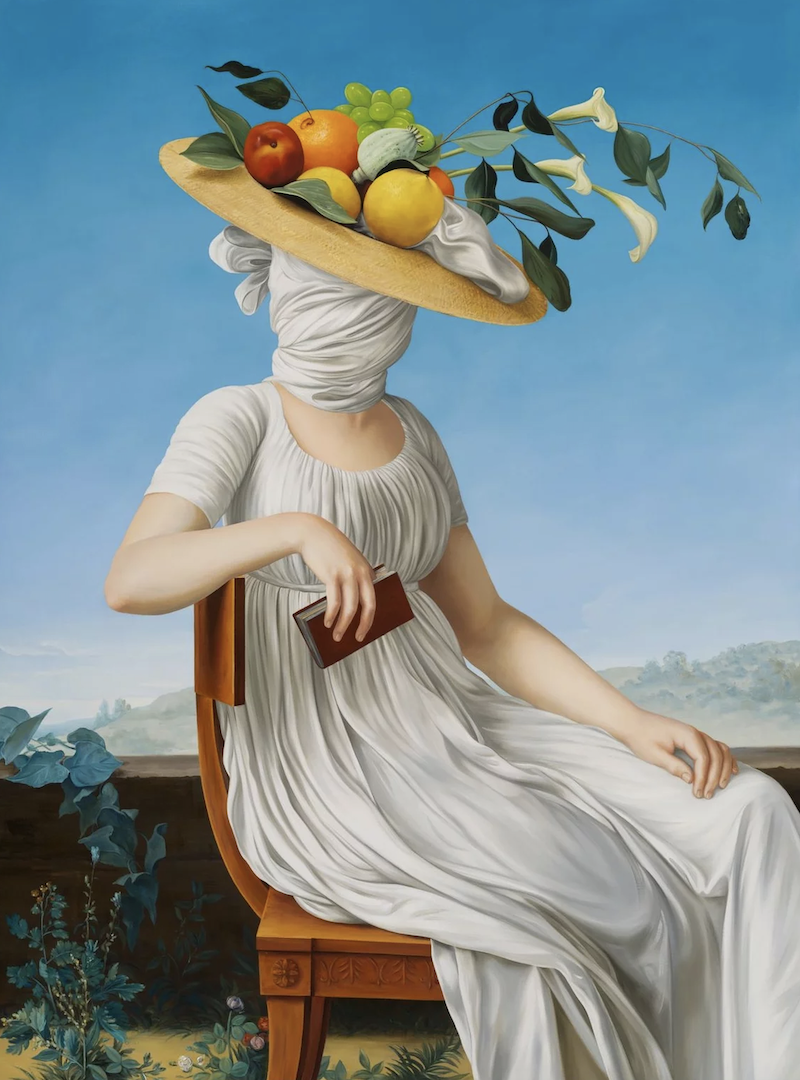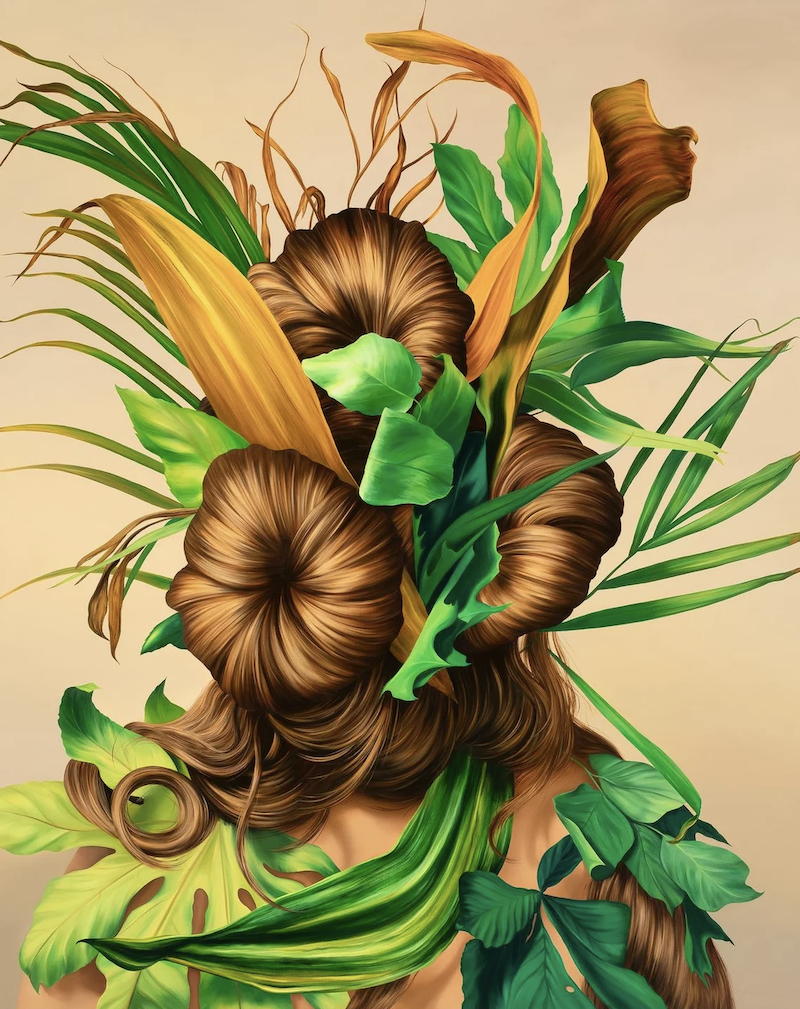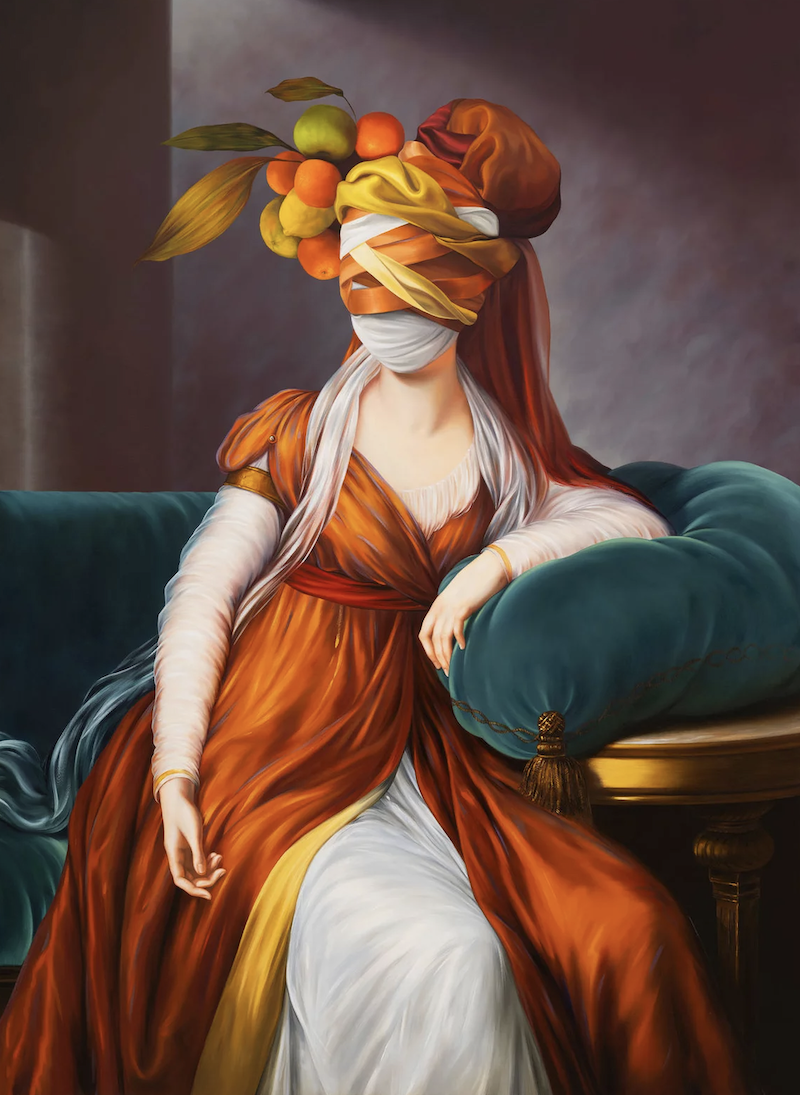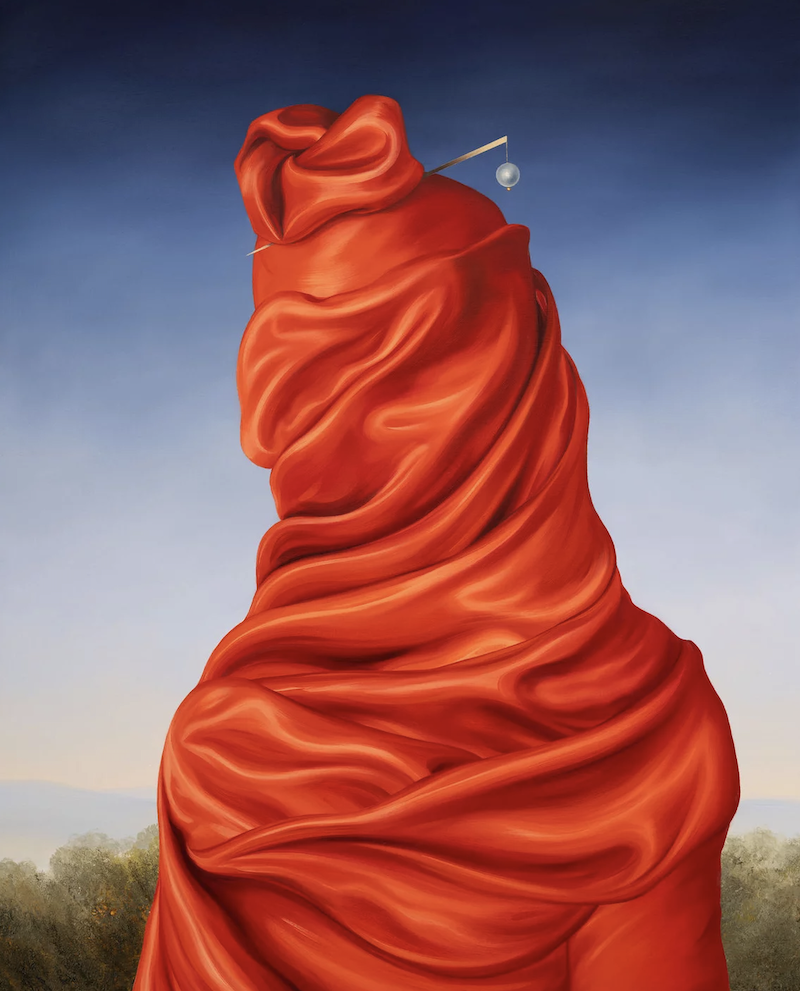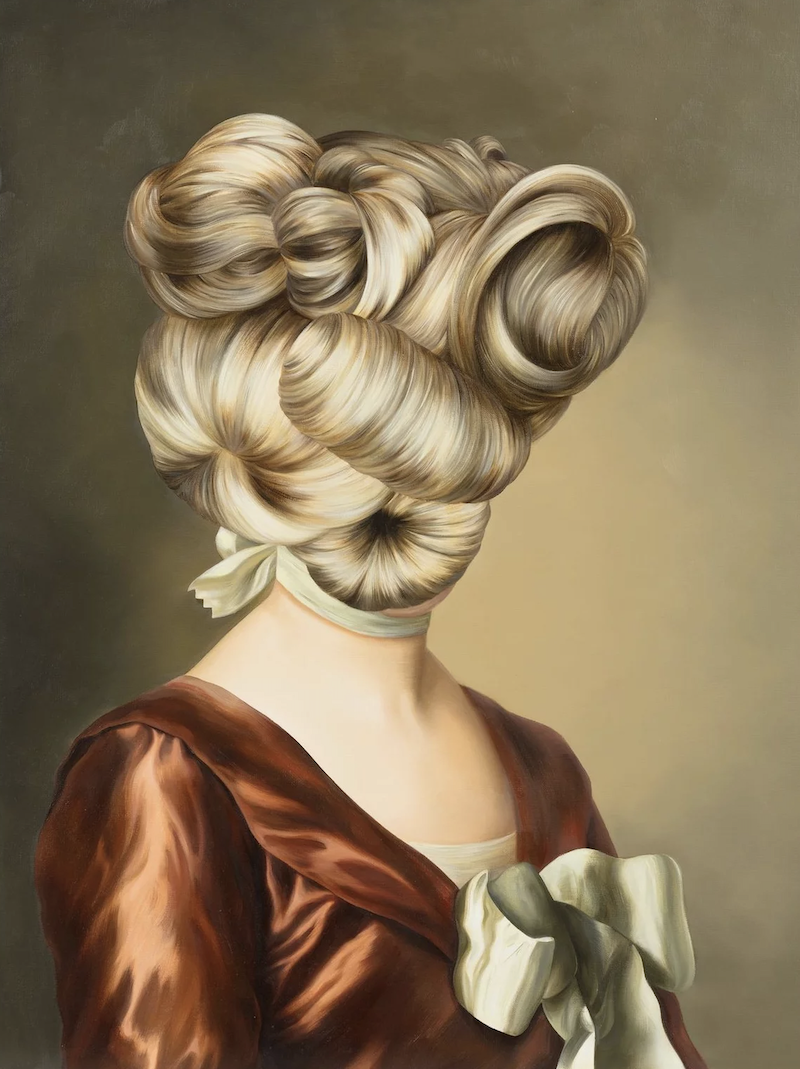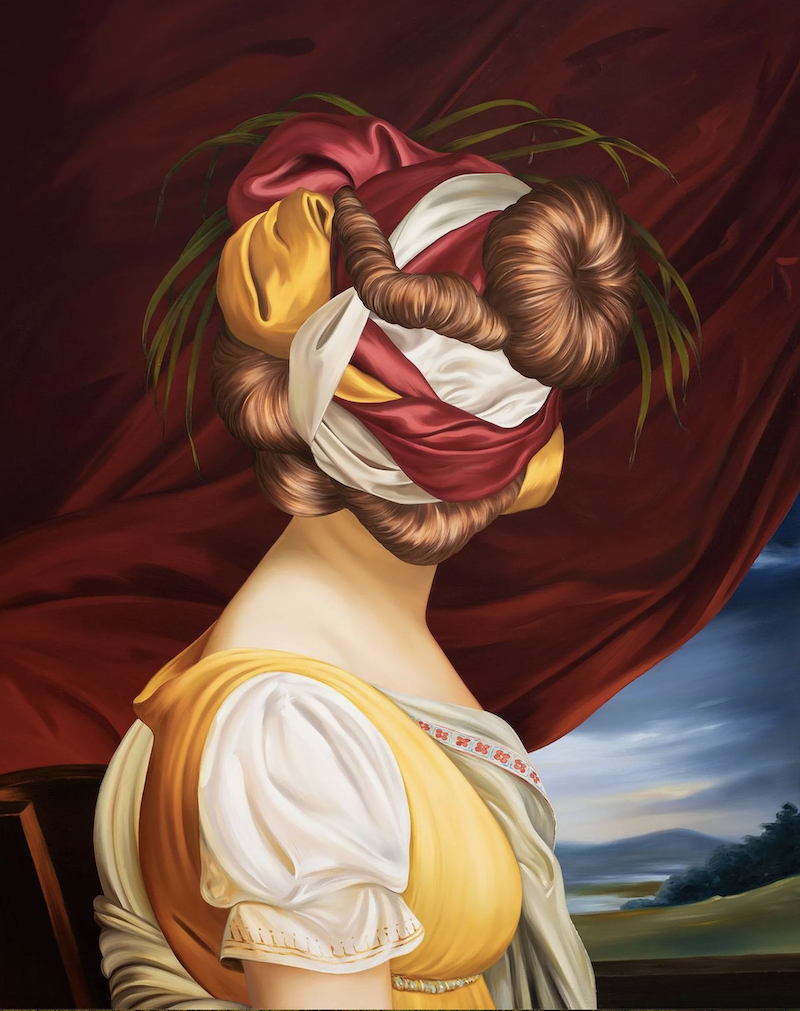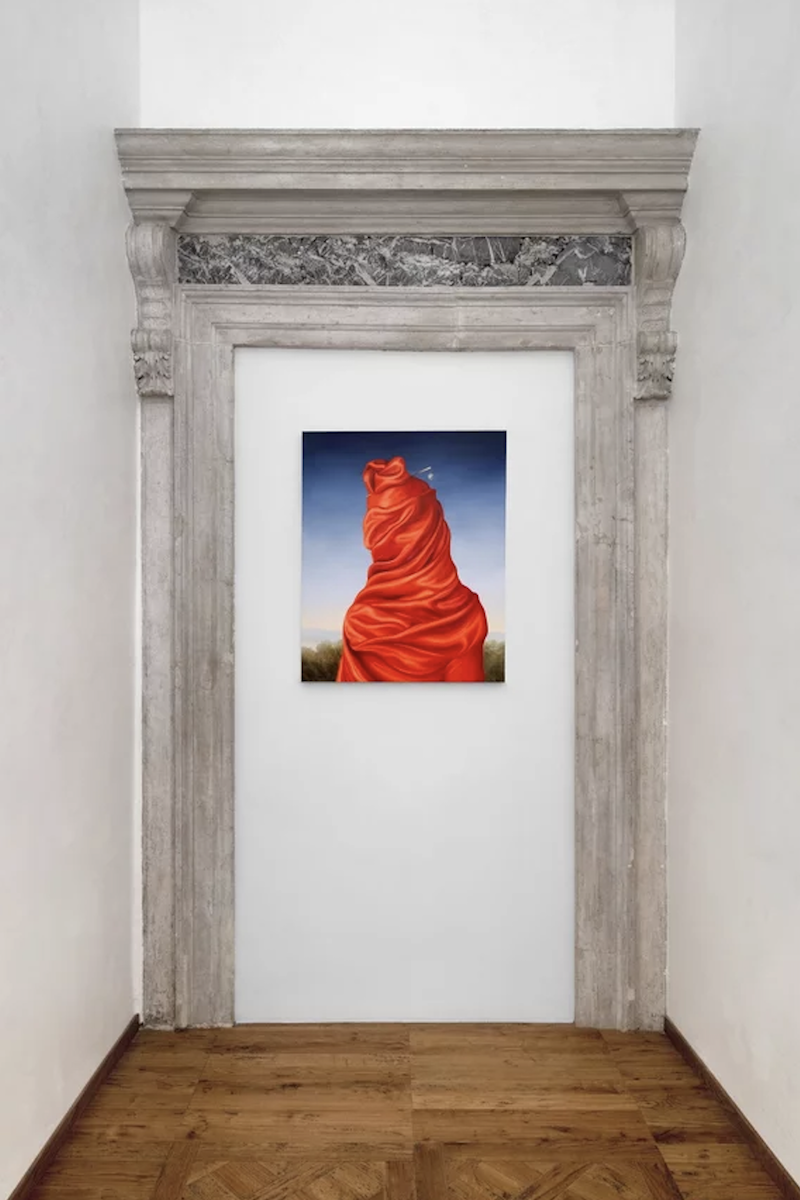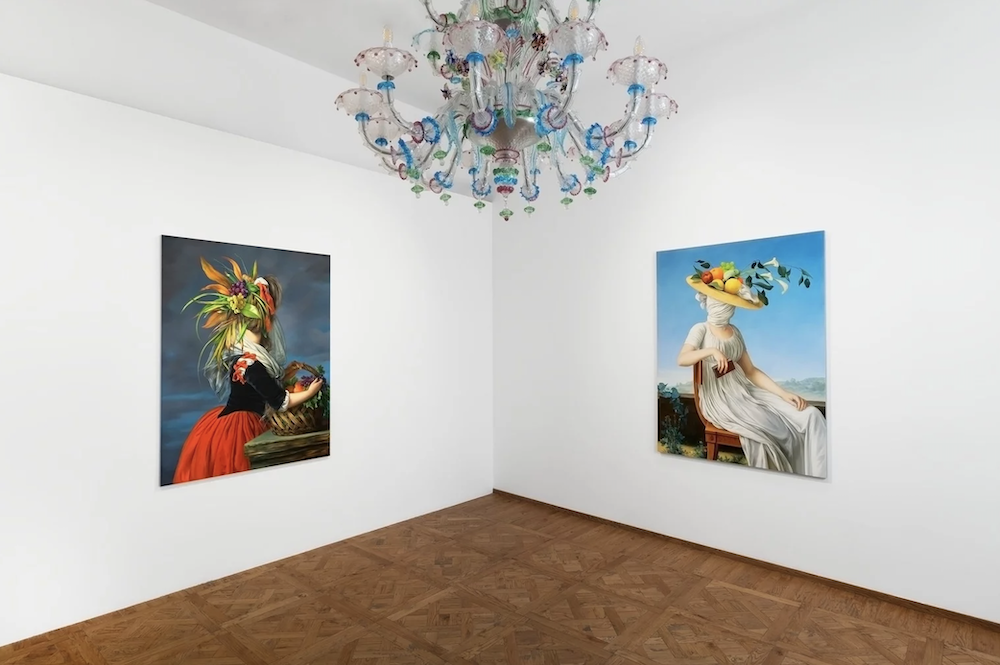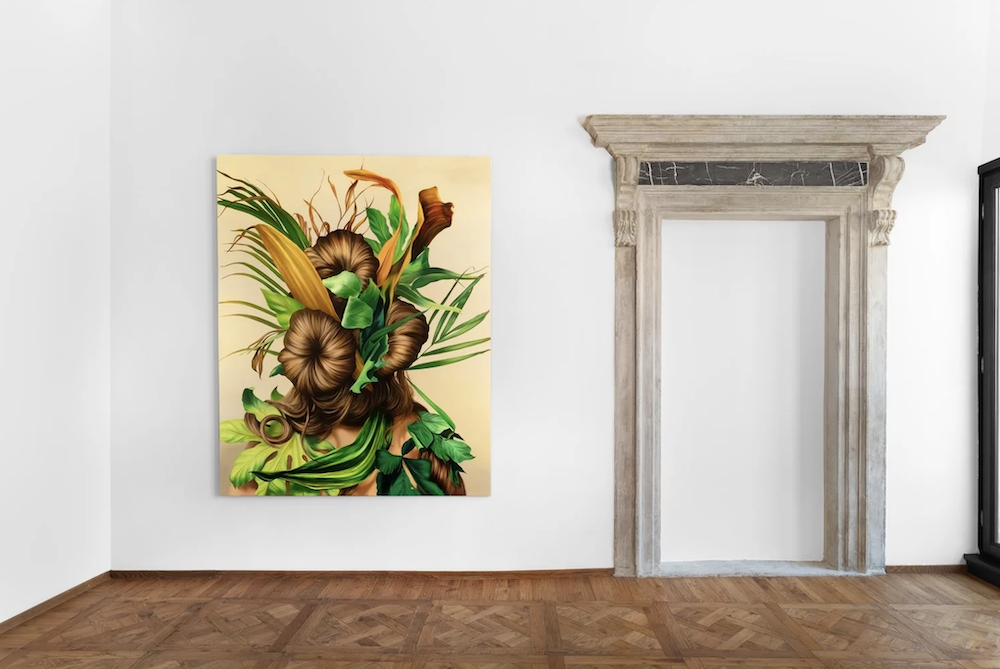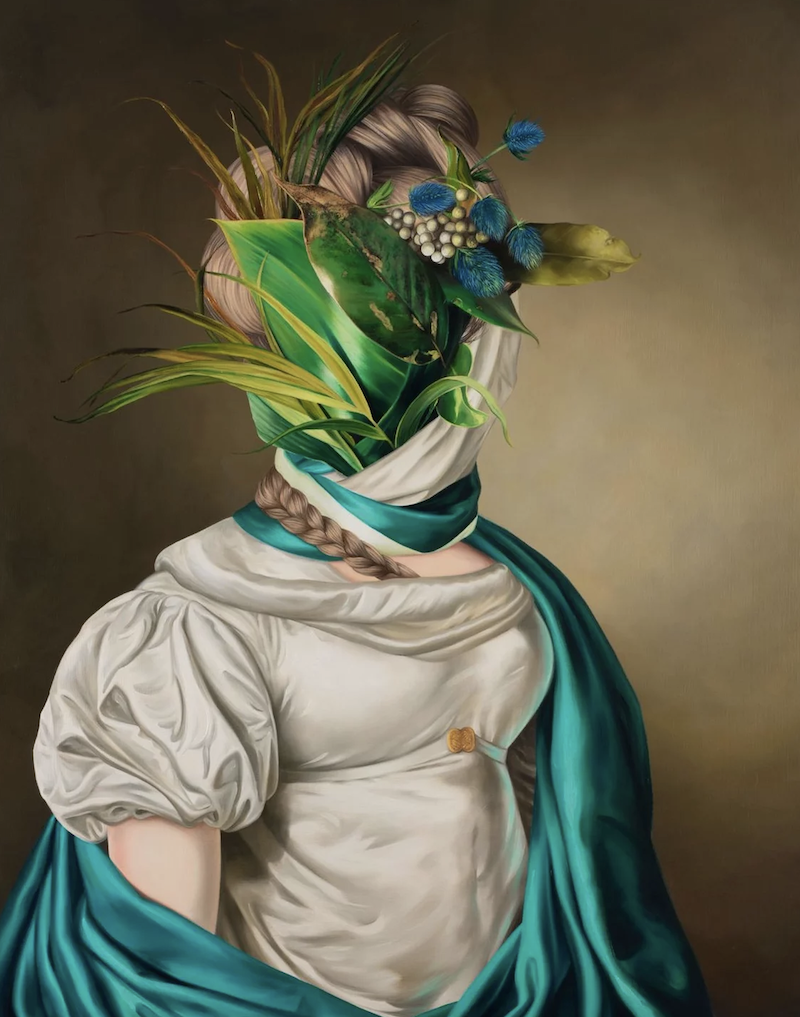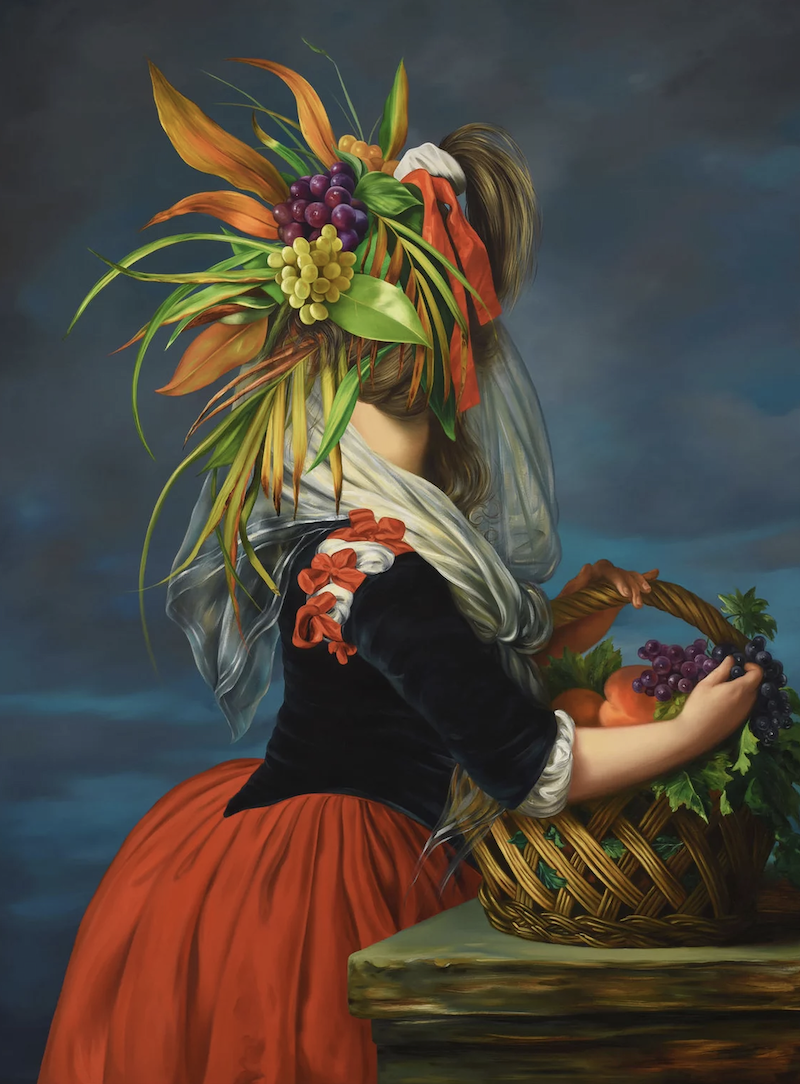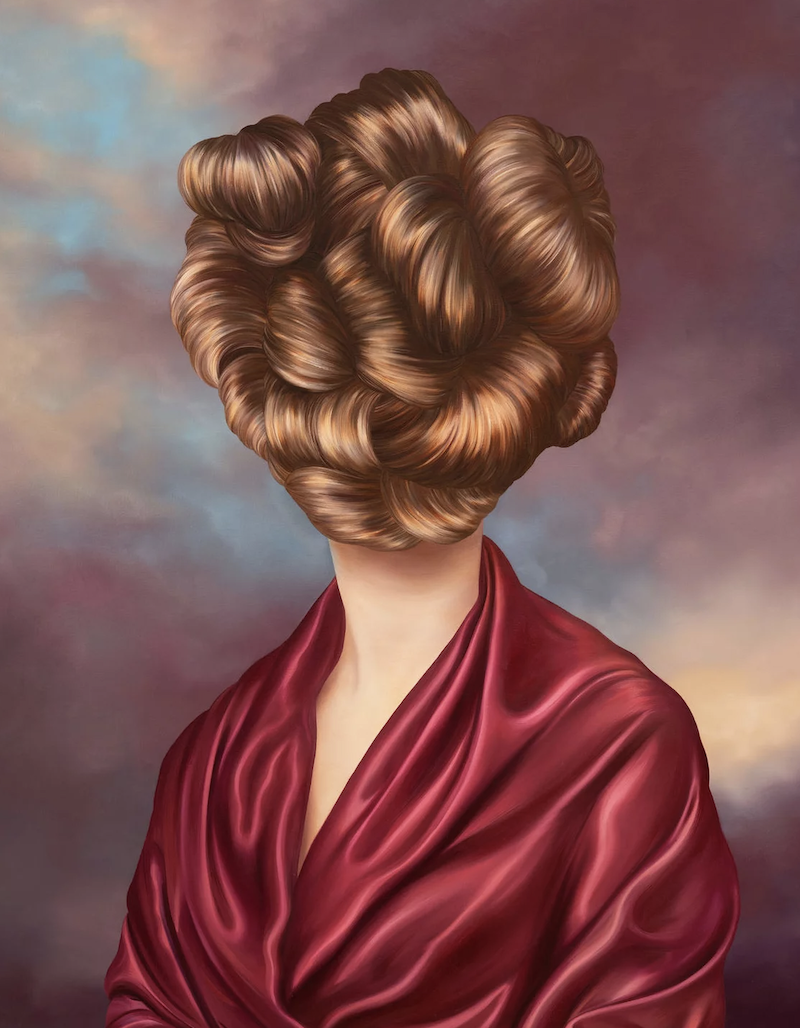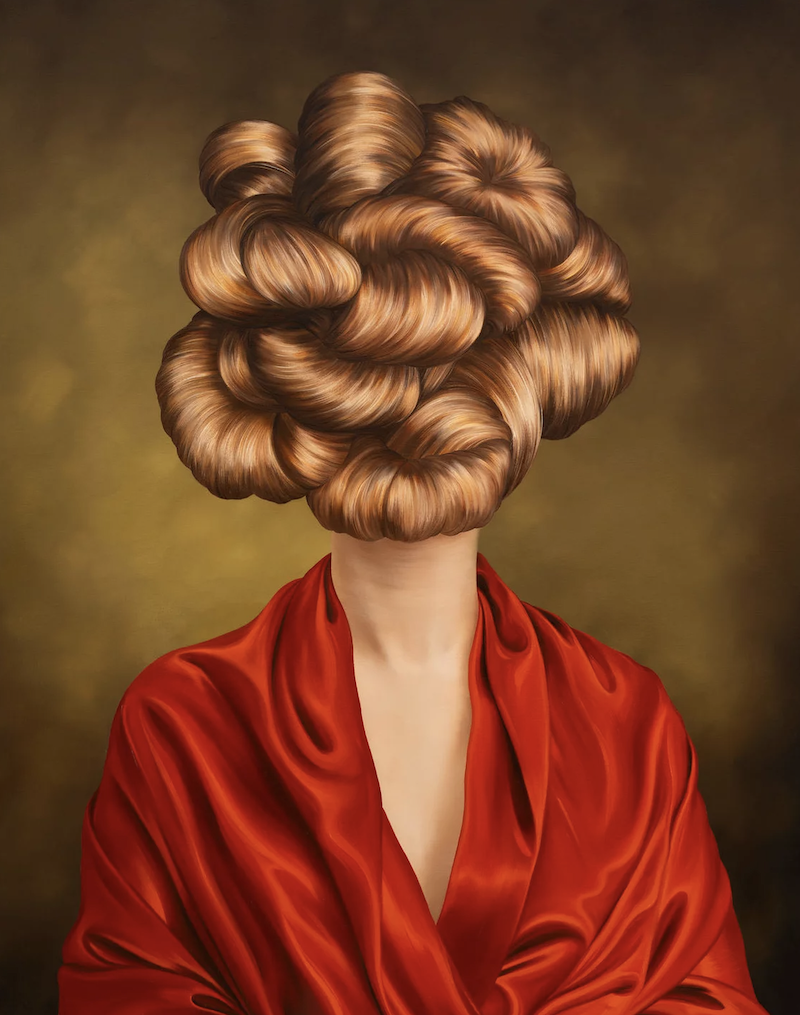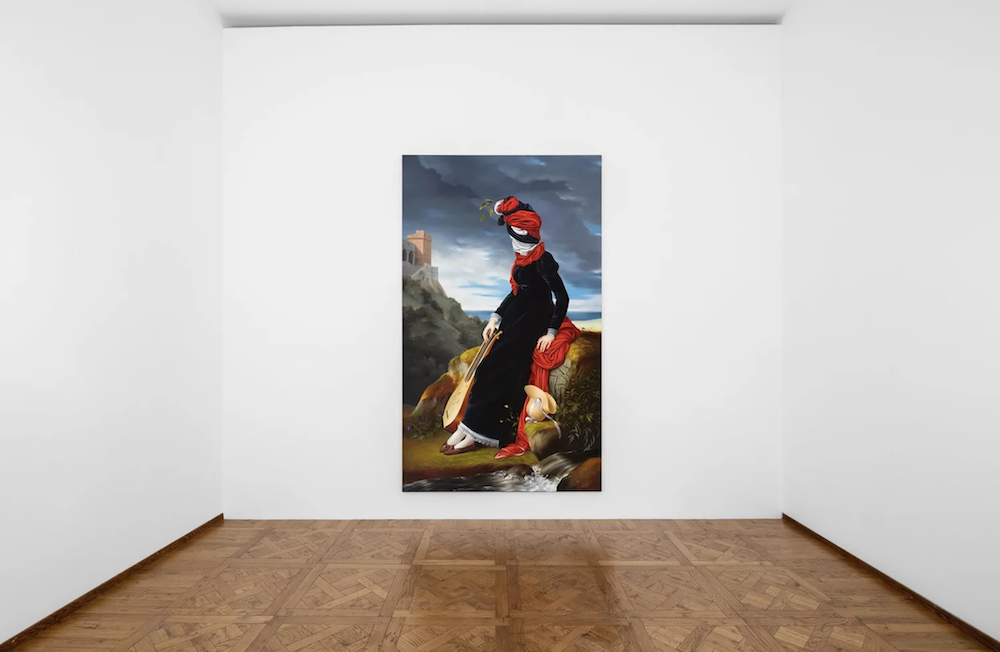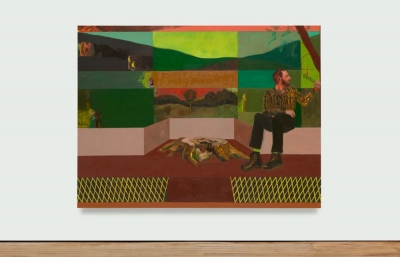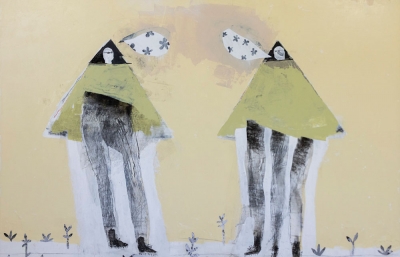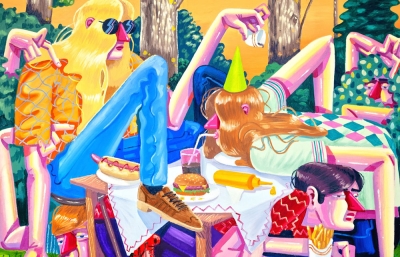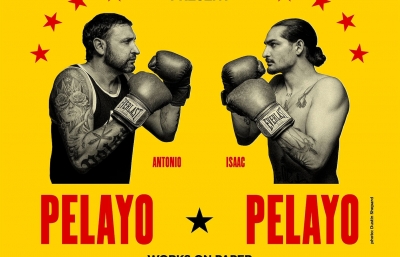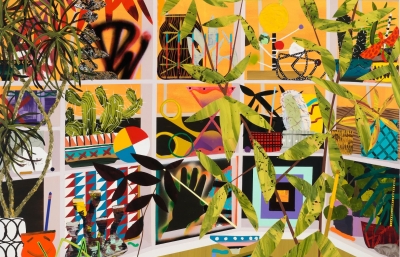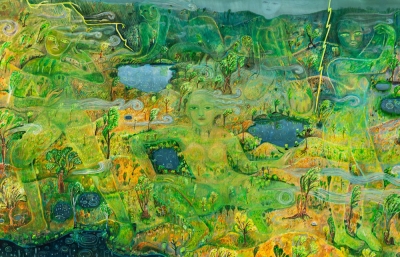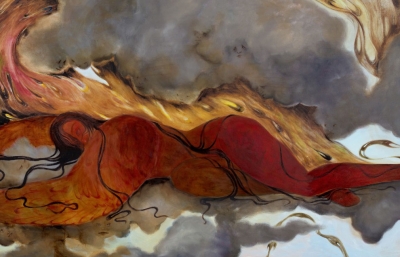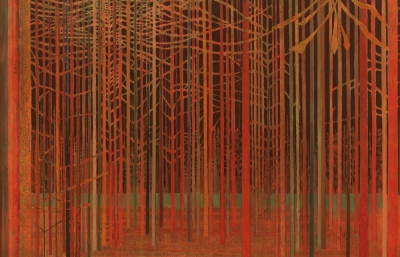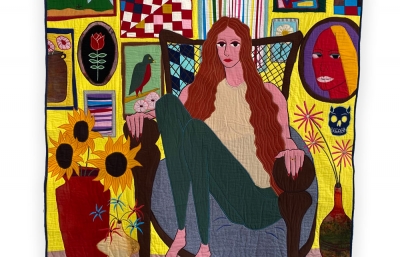We are indeed playing catch up and looking ahead to the Fall season of shows but also looking back at exhibitions we missed posting about over the late spring and early summer. Of course, one of the great shows that was buzzing around the Venice Biennale was Ewa Juszkiewicz' Locks with Leaves and Swelling Buds, put together by the Fundación Almine y Bernard Ruiz-Picasso with curation by Guillermo Solana.
For more than a decade, Juszkiewicz has created paintings based on portraits of women by European artists, especially those from the 18th and 19th centuries, while examining “where the boundaries of the portrait were and what effects she could achieve by means of deformation and distortion”. 1
In 2010, Juszkiewicz painted a series of masked characters in which the markedly feminine clothing contrasted with the violence suggested by the mask. The pro-faciality mask hid one face while proposing another, symbolic or fantastic, animal or supernatural. The anti-faciality mask, meanwhile, hides the first face and prevents the appearance of a second one, blocking the reproduction of faciality.
By 2013-2014, the dominance of the anti-faciality mask was consolidated in Juszkiewicz's work. Any object capable of replacing a head or any material capable of enveloping it would be used: hypertrophied mushrooms, a bouquet of flowers, a tangle of branches and leaves, a combed or braided head of hair, a bandage made of luxurious fabrics.... When these objects and materials appear in the place of the face, the viewer looks for signs of an eye, nose, mouth, for signs of a facial outline; sometimes, but for an instant, they may think they have found them, but their reading is immediately frustrated. The anti-faciality mask actively resists our desire to decipher a face in it.
In her versions of old portraits, Juszkiewicz cultivates a traditional pictorial craft, painting in layers, with many glazes, following the brushstrokes of the original work. But her technical virtuosity would be useless were it not at the service of a transgressive project. By covering the face of historical portraits, Juszkiewicz challenges the very essence of this genre: she destroys the portrait as such. Her paintings are no longer portraits of anyone in particular, but representations of the condition of women under patriarchy. And, as she points out, at the heart of the intervened portrait she drives the stake of another genre: the still life, to which belong the fabrics, flowers, fruits, and other objects the artist uses as masks, subverting the traditional hierarchy of genres and the culture/nature dichotomy. — Guillermo Solana, Artistic Director at Thyssen-Bornemisza Museum




